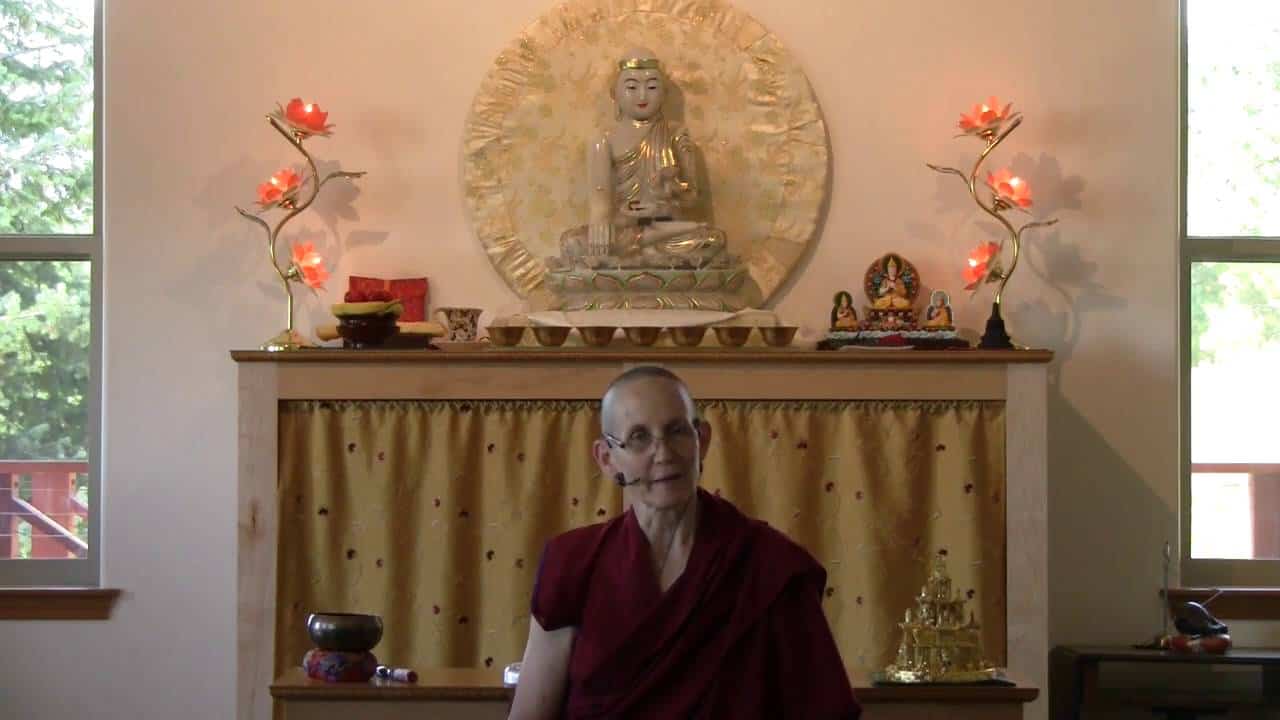Chapter 9: Verses 202-211
Part of a series of teachings on Aryadeva's 400 Stanzas on the Middle Way given on an annual basis by Geshe Yeshe Thabkhe from 2013-2017.
- What is the difference between Tathagata’s and arya’s cognition of emptiness?
- Refuting permanent functional phenomena in general
- Since there are no independent functional phenomena, there are no permanent functional phenomena
- Refuting that the permanent self exists because it experiences impermanent phenomena
- Refuting that uncompounded phenomena such as space, individual analytical cessations, and non-analytical cessations are permanent and substantially existent
- Refuting permanent omnipresent space
- Time is impermanent and exists only by mental imputation
- Anything accepted as a cause should be accepted as an effect
- Any functional phenomenon which changes, e.g. time, is not permanent
- Since cause and effect always have congruent characteristics, effect produced by an impermanent cause must be impermanent
Geshe Yeshe Thabkhe
Geshe Yeshe Thabkhe was born in 1930 in Lhokha, Central Tibet and became a monk at the age of 13. After completing his studies at Drepung Loseling Monastery in 1969, he was awarded Geshe Lharampa, the highest degree in the Geluk School of Tibetan Buddhism. He is an emeritus professor at the Central Institute of Higher Tibetan Studies and an eminent scholar of both Madhyamaka and Indian Buddhist studies. His works include Hindi translations of The Essence of Good Explanation of Definitive and Interpretable Meanings by Lama Tsongkhapa and Kamalasila's commentary on the Rice Seedling Sutra. His own commentary, The Rice Seedling Sutra: Buddha’s Teachings on Dependent Arising, was translated into English by Joshua and Diana Cutler and published by Wisdom Publications. Geshela has facilitated many research works, such as a complete translation of Tsongkhapa’s The Great Treatise on the Stages of the Path to Enlightenment, a major project undertaken by the Tibetan Buddhist Learning Center in New Jersey where he teaches regularly.


